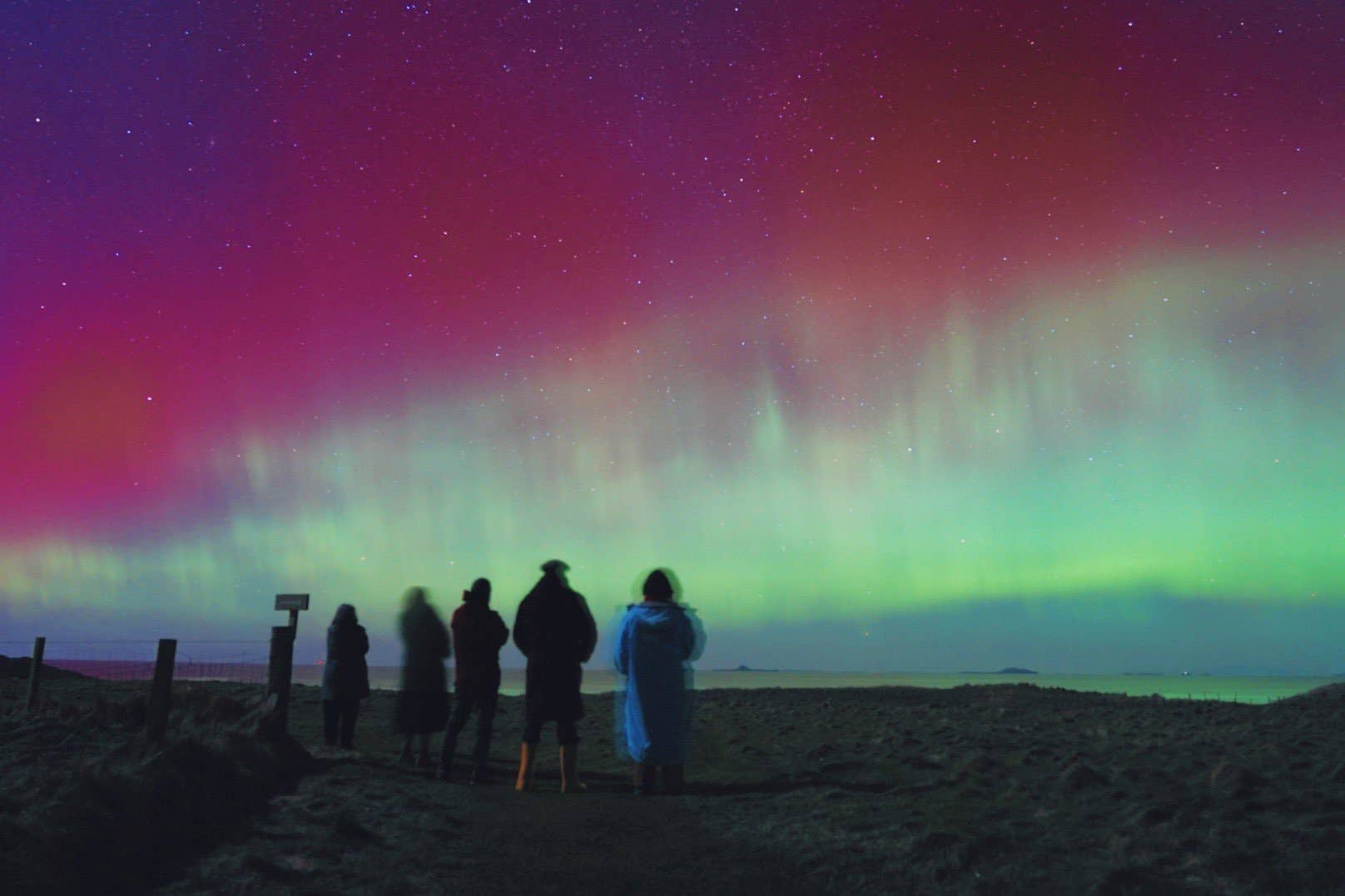Cloudy skies cut chances of spotting northern lights for third night in a row
A solar storm plus clear weather have meant spectacular sights in the night skies above the UK since Sunday.

Increasingly cloudy skies mean the chances of spotting the northern lights over the UK for a third night in a row are “severely limited”, the Met Office said.
A solar storm and clear skies resulted in sightings as far south as Cambridgeshire on Sunday night, and in Northern Scotland on Monday.
Passengers onboard an EasyJet flight from Reykjavik to Manchester were even gifted a perfect view on Monday night, as the pilot made a 360-turn to ensure they could see the aurora.
Grahame Madge, a spokesperson for the Met Office, said: “Over the last few nights the Northern Lights have been a spectacular event over parts of the UK, even including spots in southern England.
“The levels of solar activity are now reducing and this combined with increasingly cloudy skies mean that the chances of a sighting are now severely limited.”
However, Mr Madge added that as the natural spectacle diminishes, keen stargazers may still be able to spot a glimpse of the lights tonight from the coast of north-west Scotland.
Head of space weather at the Met Office Mark Gibbs explained that the clarity of the northern lights on Sunday night was the result of a perfect combination of a cloud-free sky, clear air, and a dim moon.
The activity over the past few days was the result of a large solar storm, which Mr Gibbs said was not unusual for this point in the solar cycle.
“What we saw (on Sunday) was a bubble of magnetised plasma particles that had come off the sun, and they happened to be heading towards the Earth in this instance,” he said.
“It took about two days for those particles to arrive from the sun, then the particles enter the Earth’s upper atmosphere and excite atoms.
“The most common sight is green, which is the result of oxygen atoms being excited. (On Sunday) night we saw some reds and purples, indicative of nitrogen atoms being excited.”
Subscribe to Independent Premium to bookmark this article
Want to bookmark your favourite articles and stories to read or reference later? Start your Independent Premium subscription today.
